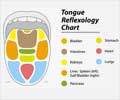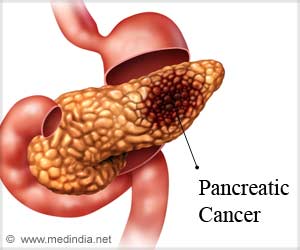Dentists in the US are increasingly using screening devices to detect oral cancer, but some question their efficacy.
Dentists in the US are increasingly using screening devices to detect oral cancer, but some question their efficacy.
The new tests to identify cancers and premalignant lesions have set off a debate over cost and effectiveness. Experts are divided on whether they will reduce mortality from oral cancer or simply lead to a wave of expensive and unnecessary biopsies.Oral cancer can be painful and disfiguring, and can destroy the ability to taste and enjoy food. Smokers and heavy drinkers are considered at highest risk for the disease, but 25 percent of those who receive a diagnosis are neither. Still, the lifetime risk of oral cancer — about 1 in 99 — is very low compared with breast and prostate cancer.
An estimated 35,300 Americans learned they had oral cancer last year, and about 7,600 died from the disease.
Because the disease is often diagnosed late, many experts believe that screening can reduce mortality. This has not been proved, partly because there is a dearth of research on oral cancer.
Visual examination has generally been the first line of defence. One large study from India, where oral cancer rates are much higher than in the United States, found that when high-risk subjects had a visual exam, it reduced the mortality rate by 34 percent compared with control subjects who were not screened.
While the validity of such studies for US has been questioned, medical companies are marketing several new screening tests and devices to dentists, saying they will vastly improve early detection of oral cancer. The devices, which can cost several thousand dollars, use rinses, dyes and different types of lights to detect abnormal cells.
Advertisement
They can also charge for the test, and some insurers have started covering it.
Advertisement
Yet no extensive studies of the general population show that these devices are any better than the naked eye for screening, and they have not been shown to reduce mortality.
"There's no evidence for their use by front-line screeners, no evidence," said Dr. A. Ross Kerr, an assistant professor at the New York University College of Dentistry.
In small studies, the devices successfully detected potentially malignant lesions that experienced specialists missed with the naked eye. For example, in one group of subjects a scanning system called the VELscope identified all of the cases of moderate to severe dysplasia, or potentially precancerous cells, compared with just 68 percent for a visual exam, said the study’s author, Dr. Edmond Truelove, a professor and the chairman of oral medicine at the University of Washington. (Dr. Truelove does not receive financing from LED Dental, the company in British Columbia that makes the VELscope.)
Another study of 688 high-risk patients examined by experienced specialists found that when only a visual exam was performed, the specialist requested a biopsy of 12 of the 30 lesions that turned out to be cancerous. Of those who also used toluidine blue, a dye that is a component of a test called ViziLite Plus, 29 of the 30 lesions would have been biopsied, said the study’s author, Dr. Joel Epstein, a professor of oral medicine at the University of Illinois, Chicago.
But he added, "What we don’t know is what happens if we use the same technique in a low-risk population by people with less experience." (Dr. Epstein said that in the past he had received compensation from Zila Pharmaceuticals, which makes ViziLite, and is currently receiving financing from the company for a small study.)
The tests have a high false-positive rate that may lead to unnecessary biopsies, it is pointed out. If a suspicious lesion is detected, dentists typically ask the patient to return in two weeks to see if it has improved. If not, the patient may be given a biopsy or referred to a specialist, writes Laurie Tarkan, in New York Times.
Some dentists are telling their patients that because of the rise of oral cancers linked to HPV, every adult, not just the traditionally high-risk groups, should be screened with these devices.
Yet oral cancers associated with the papillomavirus are still rare, and they typically occur near the base of the tonsils and the back of the tongue, where they are very difficult to see at the earliest stages, even with the use of these devices, said Dr. Maura L. Gillison, a professor of medicine at Ohio State who is a leading expert on oral HPV.
Dr. Mark Lingen, an associate professor of pathology at the University of Chicago Medical Center, agreed. “If you can’t get back there to see it,” he asked, “how is that device going to help you?”
But Dr. Epstein says the devices may help. “If you’re someone with a high risk of HPV exposure, meaning that you’ve had oral sex with multiple partners, you need to be examined carefully,” he said. “Higher-risk people could maybe benefit from some of these adjuncts.”
Dr. Truelove, who did the VELscope study, said he would not recommend expensive screening for normal individuals, but he added, “On the other hand, a low-cost test, say $5, that enhances a clinician’s ability to detect something they might otherwise miss is potentially useful, particularly in people who have some increased risk of the disorder.”
Most experts agree that everyone should have an annual visual exam and that it should be thorough. A dentist or trained hygienist should examine the cheeks, the gums, the floor of the mouth, the area behind the teeth, the palate and the tonsil area, pulling the tongue forward — often to the point of gagging. The dentist should also feel the lymph nodes of the neck, sometimes the first visible sign of oral cancer.
Researchers are working on the holy grail of oral cancer screening: a test that can analyze saliva for early gene changes that could lead to the disease.
Source-Medindia
GPL/L













